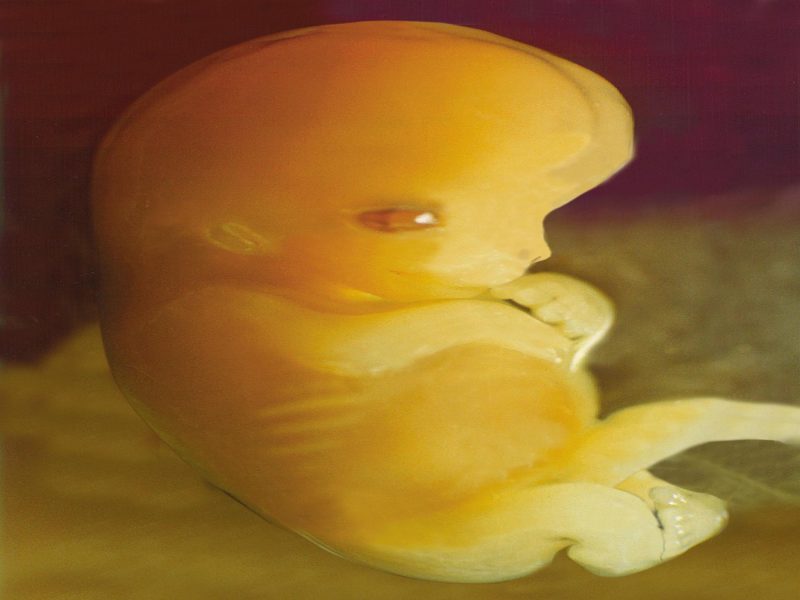
The evolution of the human genome has been facilitated to a great extent by the activity of transposable elements (TEs), also known as “jumping genes”. As the name implies, TEs are DNA sequences capable of moving or transposing from one position in the genome to another and were first described by Nobel laureate Barbara McClintock.
Interestingly, McClintock also indicated that a “genome shock” or stress may induce the mobilization of TEs. Several different stressors (i.e. starvation, heat stress, etc.) are associated with increases in intracellular reactive oxygen species (ROS) and calcium (Ca2+), and cellular stress has been shown to induce TE mobilization in several model organisms and in vitro (i.e. yeast, flies, and mouse cells). ROS also induces mobilization of TEs in human neuroblastoma cells. Additionally, evidence indicates that organisms that reside in stressful environments such as the “African” south-facing slope of “Evolution Canyon” located in Israel (experiences significantly higher levels of solar radiation, drought, and temperature compared to the “European” north-facing slope) may experience enhanced TE activation and mobilization compared to less stressful environments.
Other stressful environments that may also promote TE mobilization and hence organismal evolution include the Galapagos and Hawaiian Islands (both volcanic islands). Strikingly, one of the oldest living non-clonal organisms on the planet, the Great Basin Bristlecone Pine (Pinus Longaeva, > 5000 years), thrives in a harsh environment that includes elevated levels of UV radiation, nutritionally-deprived soils, and harsh temperatures, indicating that cellular stress may not only promote genome evolution and speciation through TE mobilization but may also increase lifespan.
Furthermore, the induction of cellular stress, mediated by increases in ROS and/or Ca2+, etc. may link TE mobilization, lifespan, speciation, and human genome evolution with the creation of human life via AMPK activation. AMPK is an evolutionarily conserved kinase that is present in nearly every eukaryotic organism. AMPK is activated by a wide range of cellular stressors (e.g. temperature variations, starvation, radiation, exercise, etc.) as well as by increases in intracellular ROS, Ca2+, and/or an AMP(ADP)/ATP ratio increase (an indicator of an energy deficit).
AMPK is also activated by a many plant- and bacterial-derived compounds that have demonstrated extensive therapeutic effects in human cells, in animal models, and in humans (e.g. metformin, resveratrol, butyrate, ionomycin, etc.). Indeed, a TE known as L1 is active and capable of mobilization in human oocytes, human sperm, and in human neural progenitor cells. AMPK is found in oocytes and stress-inducing compounds that increase ROS or Ca2+ levels (e.g. menadione) promote oocyte maturation in an AMPK-dependent manner.
L1 depletion also inhibits oocyte maturation. Oocyte maturation precedes and is critical for efficient oocyte activation. Oocyte activation is indispensable for the creation of all human life. Every human being alive today and any human being that has ever lived began their existence as an activated oocyte. Human oocytes can be activated by several stress-inducing compounds that activate AMPK, including A23187, ethanol, and ionomycin. Ionomycin, which has been extensively used during in vitro fertilization procedures to produce normal, healthy children, is an antibiotic produced by certain bacterial strains from the genus Streptomyces. Cellular stress and increases in ROS and Ca2+ have also been shown to increase antibiotic production by Streptomyces, indicating that the beneficial effects of cellular stress cross species boundaries.
AMPK has also been found localized at the acrosome (the head region) of human sperm and ROS and ionomycin induce the acrosome reaction in human sperm. The acrosome reaction involves the releases of enzymes that are critical in facilitating penetration and fertilization of an oocyte by sperm. Interestingly, increases in ROS and Ca2+ also facilitate hippocampal long-term potentiation (LTP, considered a cellular correlate for learning and memory) and AMPK activation has been shown to be required for long-term memory formation, as AMPK inhibition significantly inhibits hippocampal LTP in vitro and long-term memory formation in vivo. The AMPK activator metformin, however, enhances neurogenesis (i.e. generation of new neurons) and spatial memory formation. ROS induces L1 mobility in human neuroblastoma cells and inhibition of L1 mobility impairs long-term memory formation in vivo, providing further evidence that cellular stress-induced AMPK activation facilitates beneficial TE activation and mobilization.
Similarly, stress-induced AMPK and TE activation play critical roles in placental development, as ROS and Ca2+ promote trophoblast differentiation and the expression of syncytin-1, a protein that is derived from a TE and is necessary for the formation of the syncytiotrophoblast (facilitates nutrient and gas exchange between the mother and the fetus). Syncytin-1 is also found in human sperm and the receptor for syncytin-1, ASCT2, is found in and increases on oocyte maturation. Also, AMPK knockdown inhibits trophoblast differentiation, AMPK-activating compounds promote trophoblast differentiation, and increased levels of L1 mRNA have been detected in 3rd-trimester human placentas.
Lastly, the landmark initial sequencing of the human genome revealed that both telomerase (critical for telomere maintenance) and RAG1 (promotes DNA cleavage and transposition) are derived from TEs. Metformin has recently been shown to activate telomerase in an AMPK-dependent manner in human cells and metformin activates RAG1 via AMPK, providing compelling evidence for our novel hypothesis that cellular stress and AMPK activation links “jumping genes” with human genome evolution and the creation of all human life.
These findings are described in the article entitled Transposable elements, placental development, and oocyte activation: Cellular stress and AMPK links jumping genes with the creation of human life, recently published in the journal Medical Hypotheses. This work was conducted by Jahahreeh Finley from Finley BioSciences.









